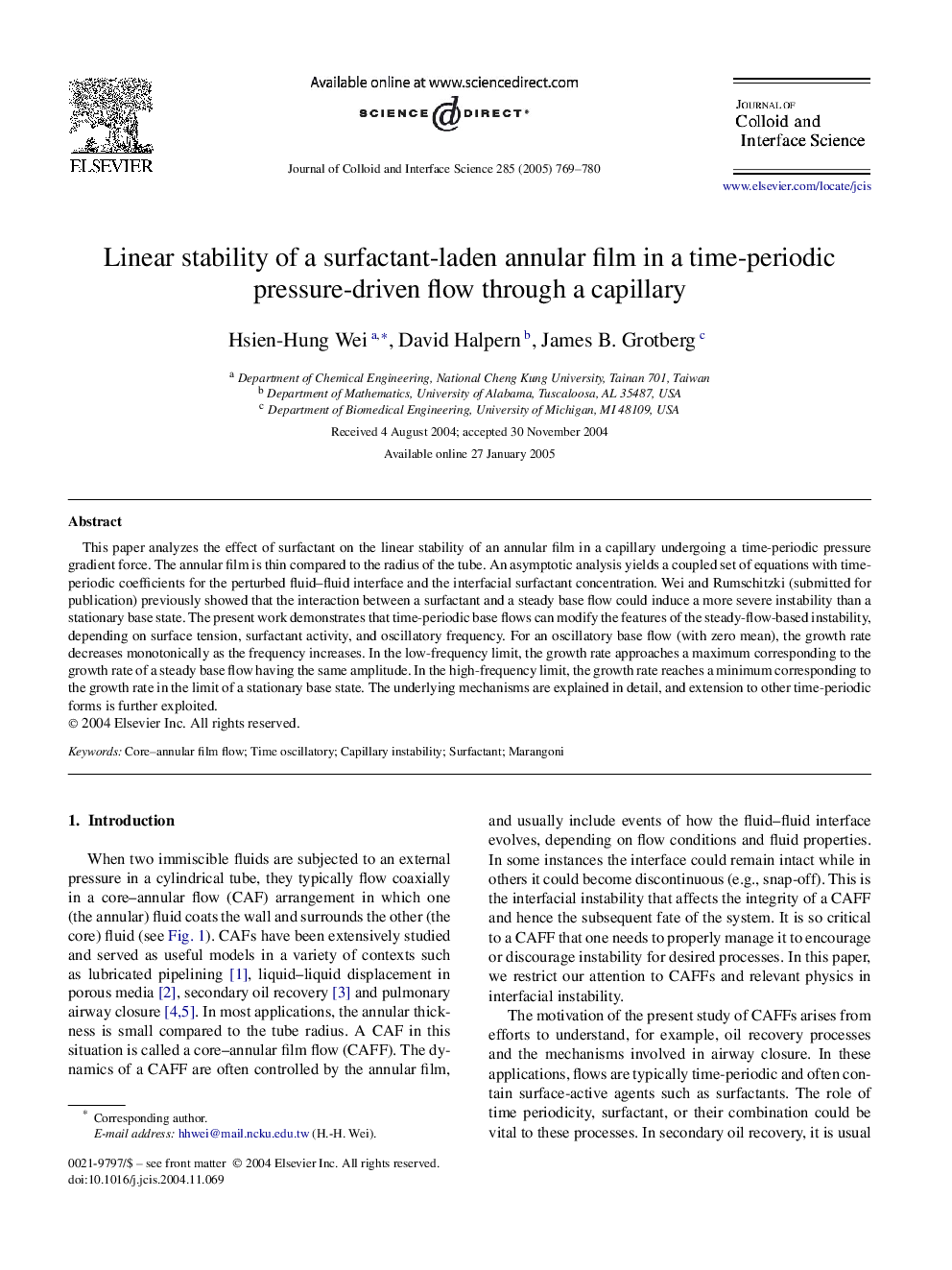| Article ID | Journal | Published Year | Pages | File Type |
|---|---|---|---|---|
| 10377934 | Journal of Colloid and Interface Science | 2005 | 12 Pages |
Abstract
This paper analyzes the effect of surfactant on the linear stability of an annular film in a capillary undergoing a time-periodic pressure gradient force. The annular film is thin compared to the radius of the tube. An asymptotic analysis yields a coupled set of equations with time-periodic coefficients for the perturbed fluid-fluid interface and the interfacial surfactant concentration. Wei and Rumschitzki (submitted for publication) previously showed that the interaction between a surfactant and a steady base flow could induce a more severe instability than a stationary base state. The present work demonstrates that time-periodic base flows can modify the features of the steady-flow-based instability, depending on surface tension, surfactant activity, and oscillatory frequency. For an oscillatory base flow (with zero mean), the growth rate decreases monotonically as the frequency increases. In the low-frequency limit, the growth rate approaches a maximum corresponding to the growth rate of a steady base flow having the same amplitude. In the high-frequency limit, the growth rate reaches a minimum corresponding to the growth rate in the limit of a stationary base state. The underlying mechanisms are explained in detail, and extension to other time-periodic forms is further exploited.
Related Topics
Physical Sciences and Engineering
Chemical Engineering
Colloid and Surface Chemistry
Authors
Hsien-Hung Wei, David Halpern, James B. Grotberg,
